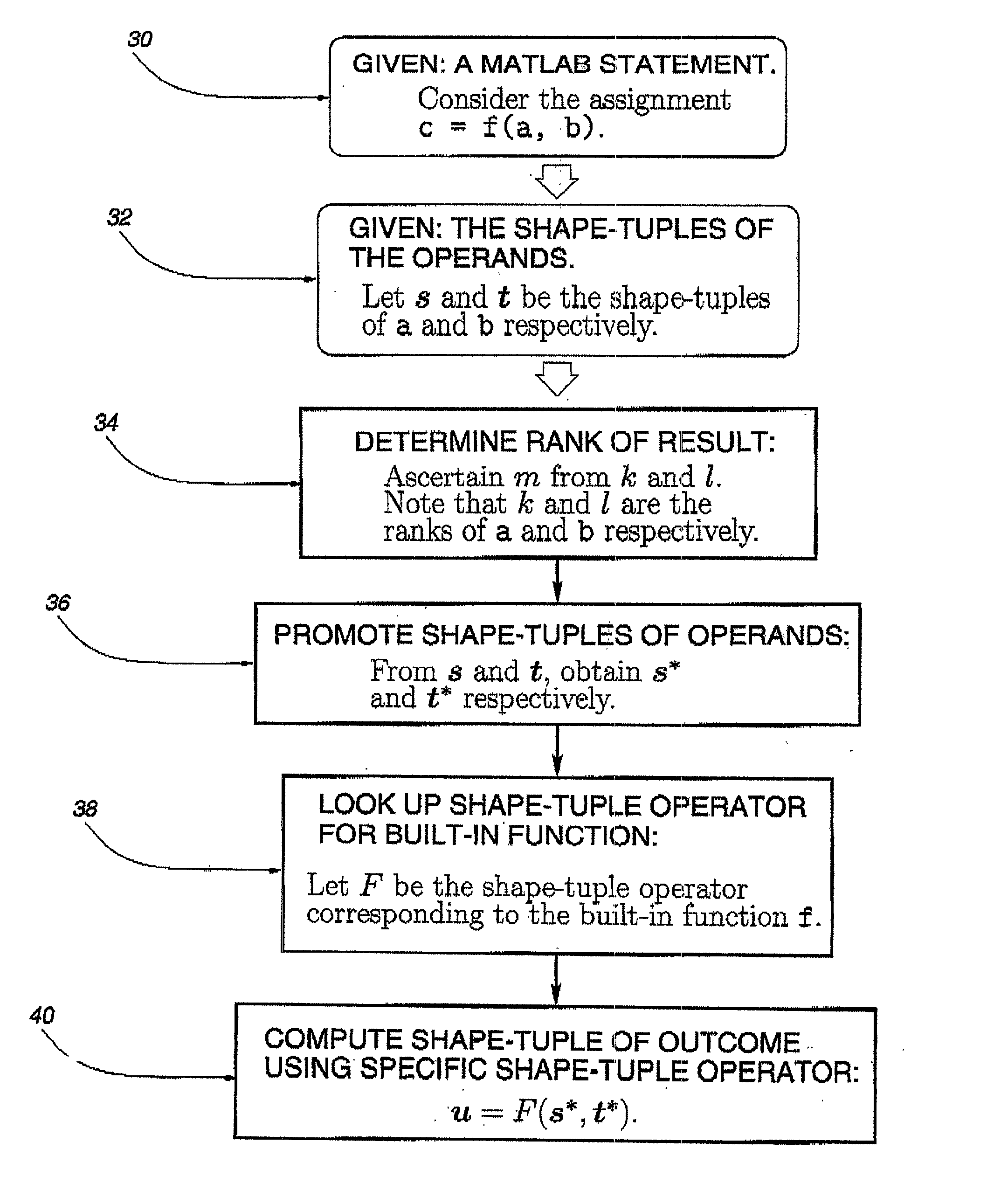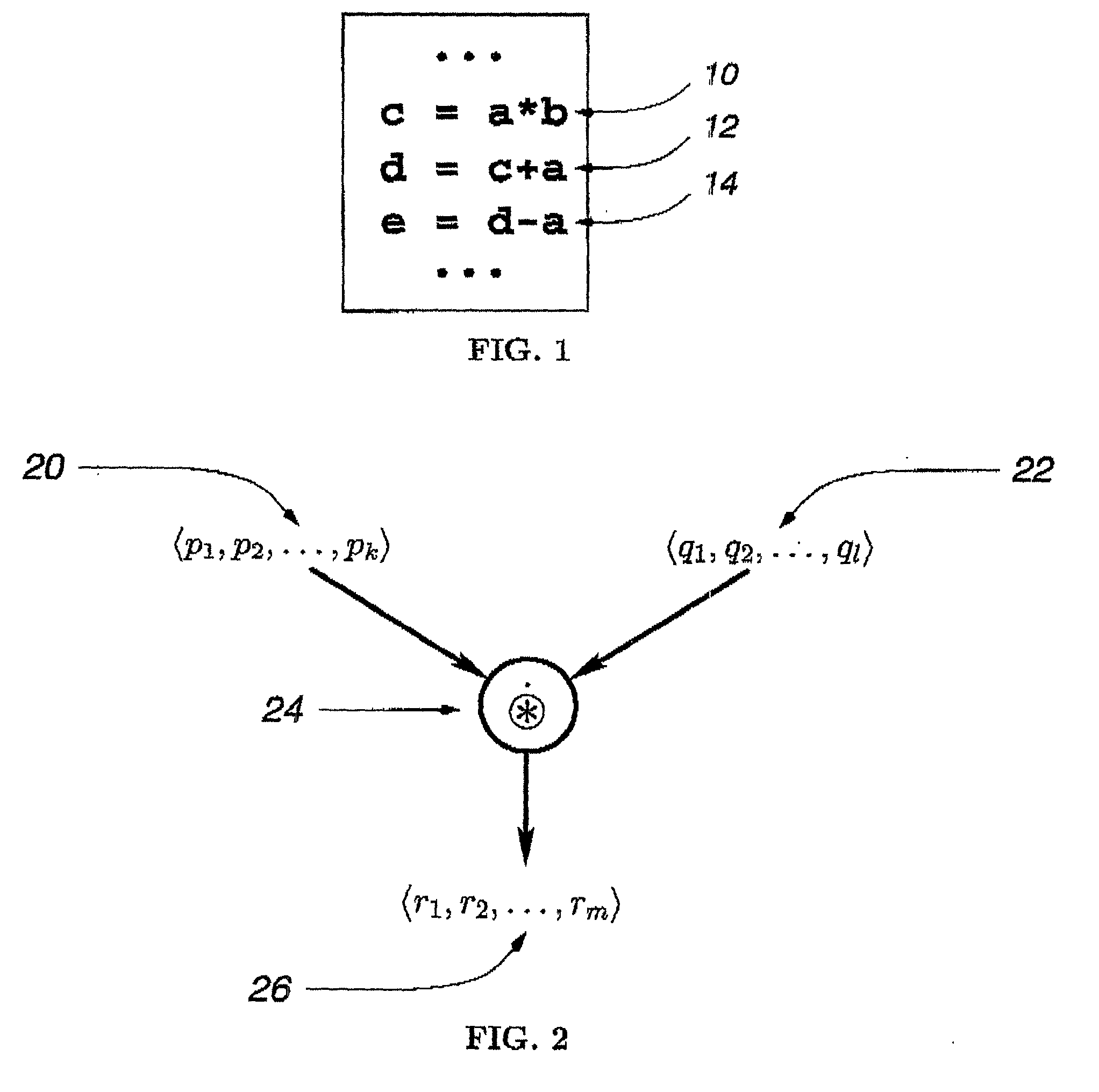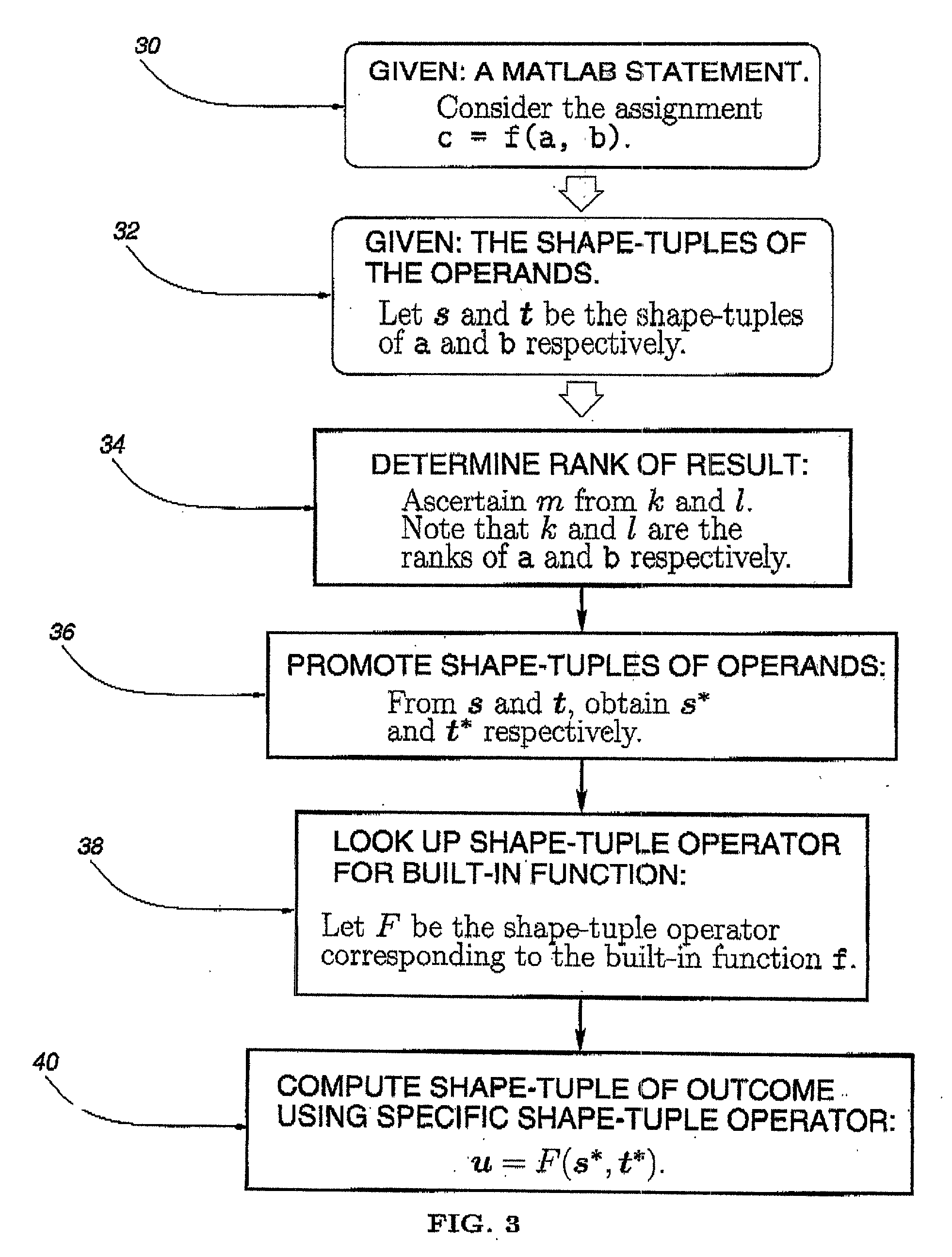Method for array shape inferencing for a class of functions in MATLAB
- Summary
- Abstract
- Description
- Claims
- Application Information
AI Technical Summary
Benefits of technology
Problems solved by technology
Method used
Image
Examples
example 1
[0048] Comparisons with the Shadow Variable Approach
[0049] Let us reconsider the code fragment shown in FIG. 1. In the shadow variable approach, the static inferencing mechanism will fail because the extents of the matrices a and b will not be known exactly at compile time. For both a and b, shadow variables will be generated at compile time to resolve the shape information at run time. The approach will not attempt to infer at compile time that if the assignment to d succeeds, the subsequent assignment to e will also succeed and that both e and d would then have the same shapes.
[0050] In the proposed framework, we obtain the following two equations corresponding to those two statements by looking up the table in FIG. 5:
u=s{circle over (+)}t, (Eg:1.1)
v=u{circle over (+)}t. (Eg: 1.2)
[0051] where s, t, u and v represent the shape-tuple classes of the program variables c, a, d and e respectively. By substituting Eq. (Eg:1.1) into Eq. (Eg:1.2), we obtain
v=(s{circle over (+)}t){circle ov...
example 2
[0056] Inferring in the Presence of Loops
[0057] Consider the following code fragment that involves a while loop:
[0058] S.sub.1: a.rarw..LAMBDA.;
[0059] S.sub.2: b.rarw..LAMBDA.;
[0060] S.sub.3: while ( . . . ),
[0061] S.sub.4: c.rarw.a.*b;
[0062] S.sub.5: a.rarw.c;
[0063] S.sub.6: end;
[0064] From statement S.sub.4 and FIG. 5, we get
u.sub.1=s.sub.i-l{circle over (+)}t (Eg:2.1)
[0065] where u.sub.l and s.sub.l indicate the respective shape-tuple classes of c and a in the ith iteration (i>1) of the loop.
[0066] From statement S.sub.5, we also have
s.sub.l=u, (Eg:2.2)
[0067] Hence, by substituting Eq.(Eg:2.1) into Eq.(Eg:2.2), we arrive at
s.sub.l=s.sub.i-1{circle over (+)}t.
.thrfore.s.sub.1=(s.sub.i-2{circle over ( )}t){circle over (+)}t.
[0068] From FIG. 6, {circle over (+)} is associative. Hence
s.sub.l=s.sub.i-2{circle over (+)}(t{circle over (+)}t).
[0069] Applying the idempotent law, the last equation becomes
s.sub.l=s.sub.i-2{circle over (+)}t.
[0070] Proceeding thus, we therefore arrive at the...
PUM
 Login to View More
Login to View More Abstract
Description
Claims
Application Information
 Login to View More
Login to View More - R&D
- Intellectual Property
- Life Sciences
- Materials
- Tech Scout
- Unparalleled Data Quality
- Higher Quality Content
- 60% Fewer Hallucinations
Browse by: Latest US Patents, China's latest patents, Technical Efficacy Thesaurus, Application Domain, Technology Topic, Popular Technical Reports.
© 2025 PatSnap. All rights reserved.Legal|Privacy policy|Modern Slavery Act Transparency Statement|Sitemap|About US| Contact US: help@patsnap.com



